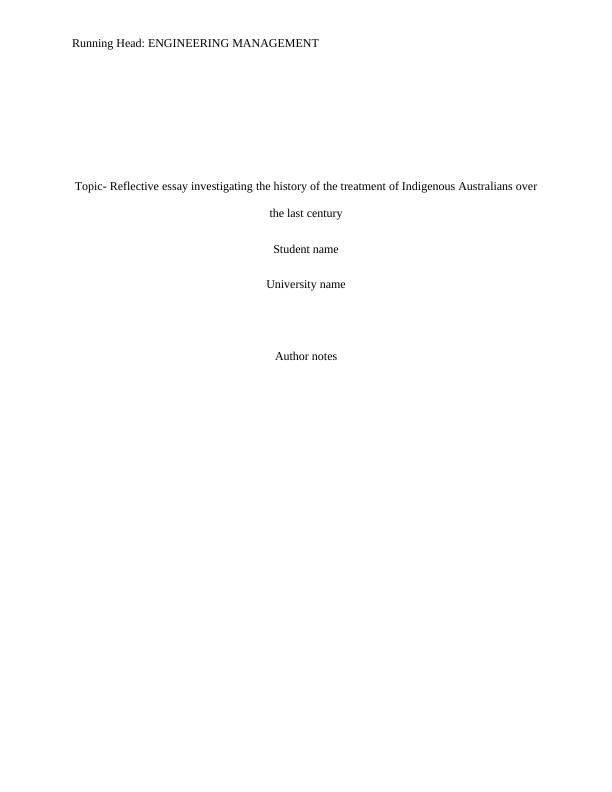Reflective Essay on History of Treatment of Indigenous Australians
8 Pages2082 Words30 Views
Added on 2023-03-20
About This Document
This reflective essay investigates the history of the treatment of Indigenous Australians over the last century and its impact on ethical practice of engineering and cross-cultural communication.
Reflective Essay on History of Treatment of Indigenous Australians
Added on 2023-03-20
ShareRelated Documents
End of preview
Want to access all the pages? Upload your documents or become a member.
Reflective Essay on Treatment of Indigenous Australians
|7
|1861
|82
Reflective Essay on Indigenous Australians over the last century
|8
|1497
|89
History of Indigenous Australians
|6
|1410
|372
History of Treatment of Indigenous Australians and its Impact on Engineering Ethics
|7
|1791
|48
History of the Treatment of Indigenous Australians
|7
|1989
|94
Reflective Essay: Engineering Innovation and Ethics
|7
|1671
|26



